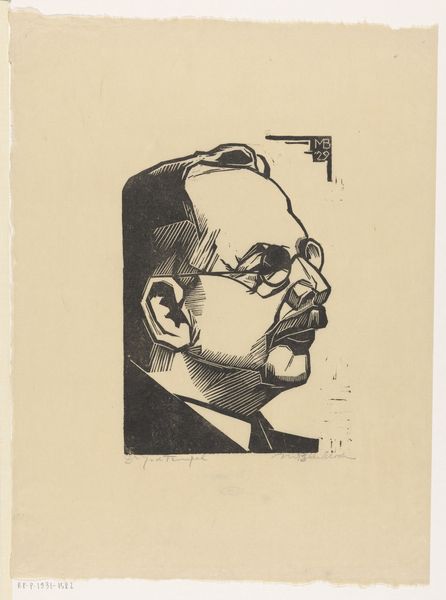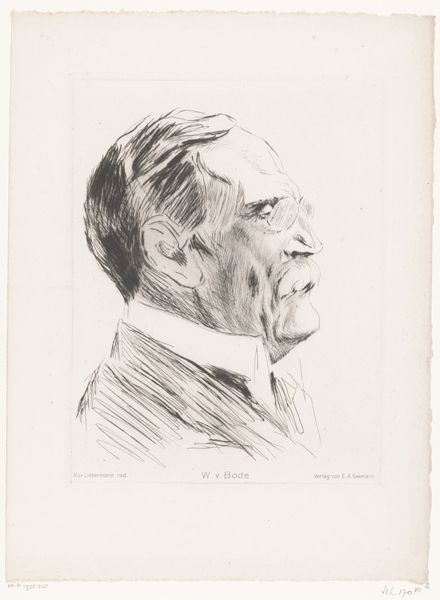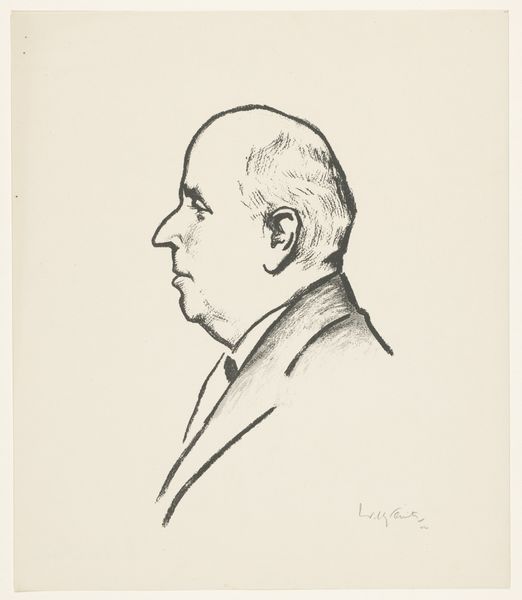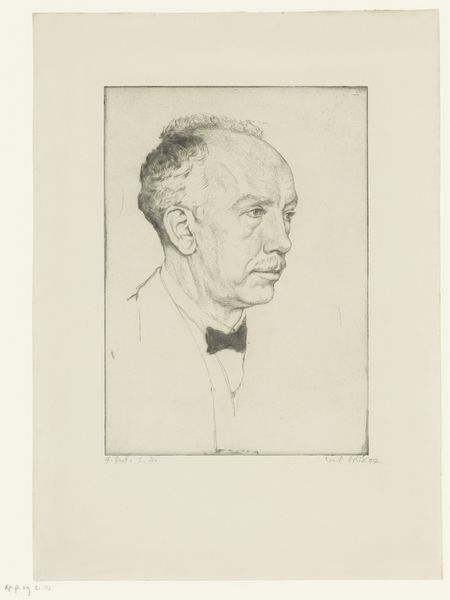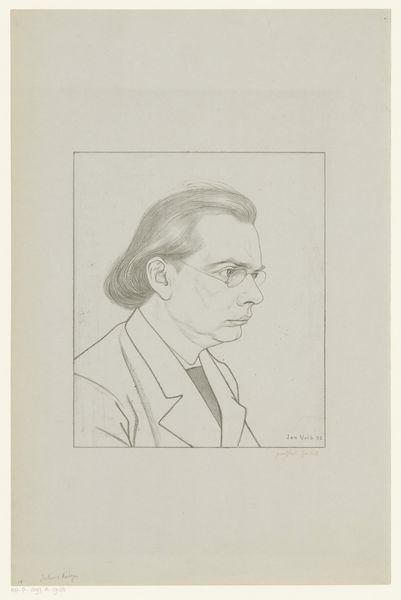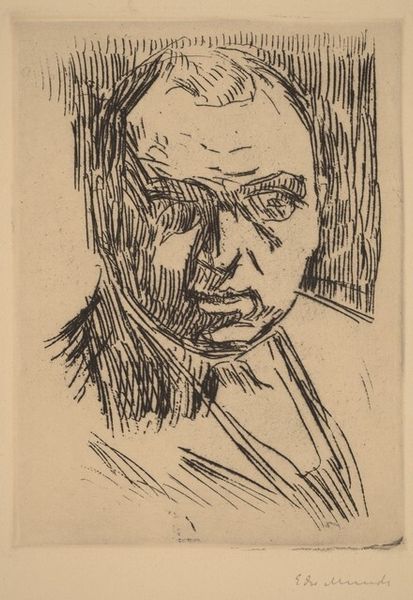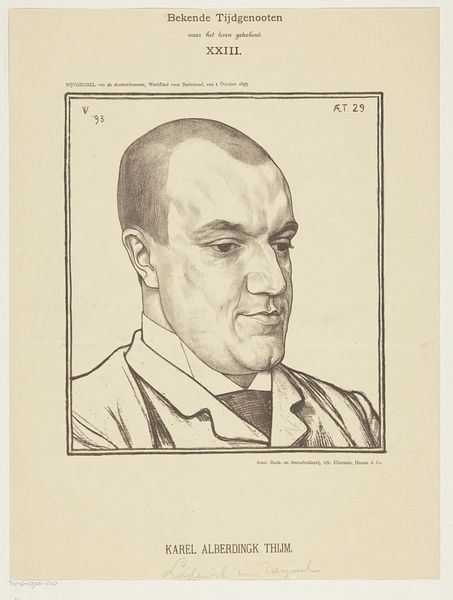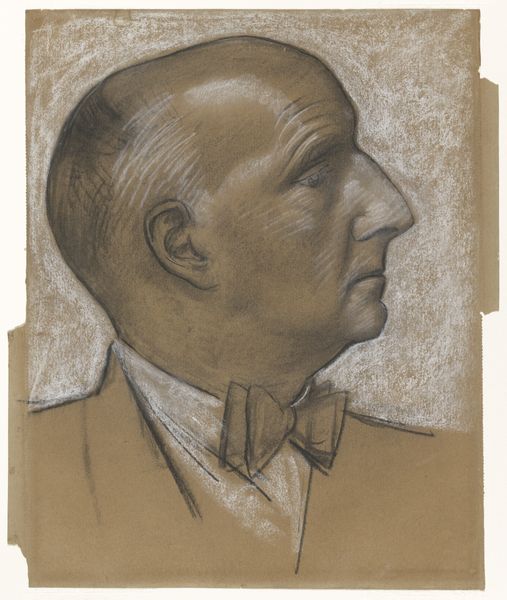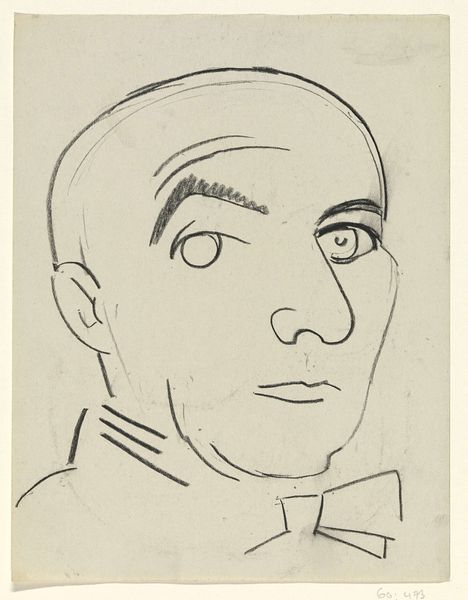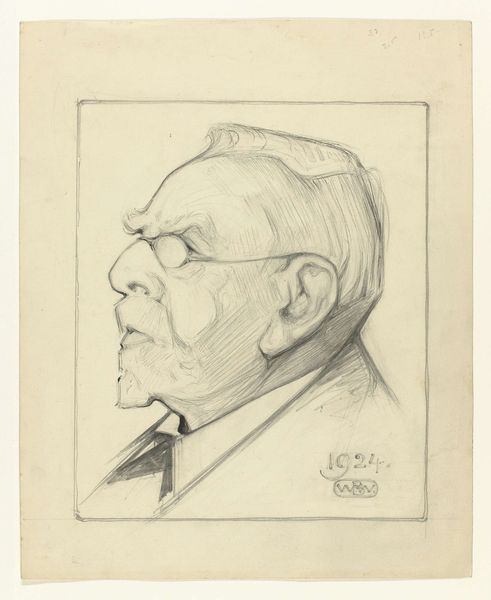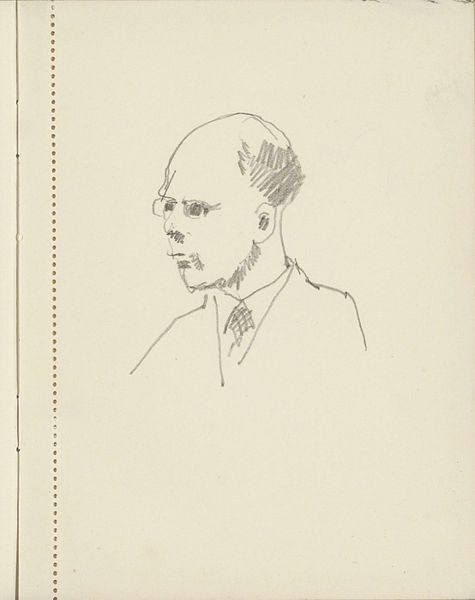
print, woodcut
#
portrait
# print
#
caricature
#
form
#
expressionism
#
woodcut
#
line
#
portrait drawing
Dimensions: height 315 mm, width 215 mm
Copyright: Rijks Museum: Open Domain
Editor: This is "Portret van Eliazer Polak," a woodcut print made in 1929 by Meijer Bleekrode, currently housed in the Rijksmuseum. It's a very striking image – the sharp lines give it a real sense of immediacy, almost a caricature. How would you interpret this work purely from a formal standpoint? Curator: The formal elements of this woodcut are particularly compelling. Bleekrode's stark contrast between black and white carves out a commanding presence. Consider how the emphatic use of line not only defines the contours of the face but also models form through densely packed hatch marks. Observe the surface. Do you see how the grain enhances the tactile quality, heightening the expressiveness beyond mere representation? Editor: I do. The hatching creates depth. It's interesting how he's used lines to almost sculpt the face. The heavy brow line and strong jaw really stand out because of that technique. Is the simplification typical for the time? Curator: The simplification can be seen as a strength, yes, in that it directs attention to fundamental forms and shapes. Notice, too, how the overall composition draws your eye into specific focal points through the use of black and white fields; consider the strategic placement of the blacks to add weight and monumentality. It’s an exploration of form through simplification and a limitation in available materials. Editor: So, it's about finding the essence of the subject through these choices. It’s amazing how much impact those bold lines create. Curator: Precisely. This exercise allows us to observe that within constraint, the artist can manipulate form to render compelling works. Thank you, I appreciate your willingness to contemplate with me, how even stark geometry can convey great affect.
Comments
No comments
Be the first to comment and join the conversation on the ultimate creative platform.
